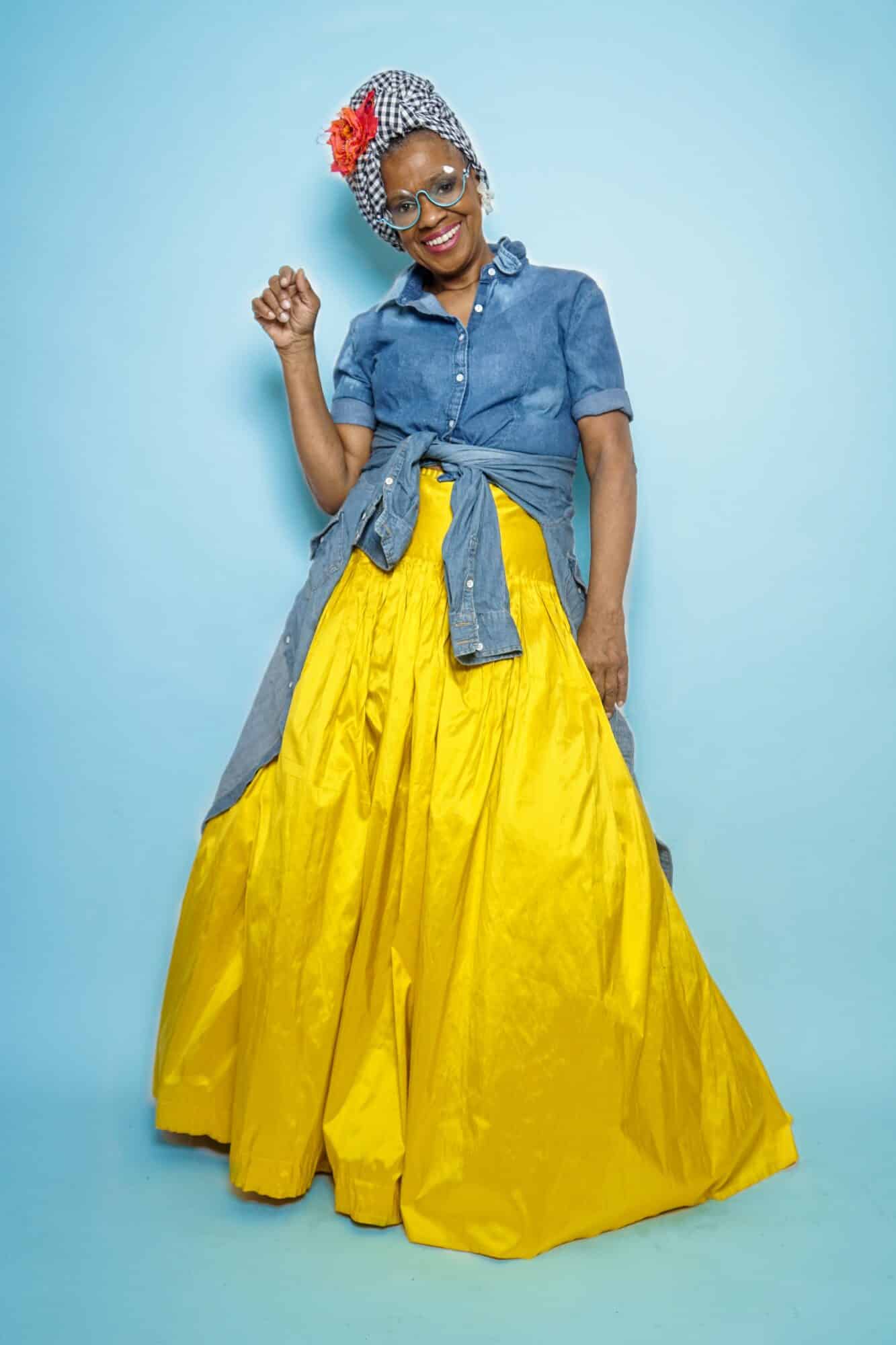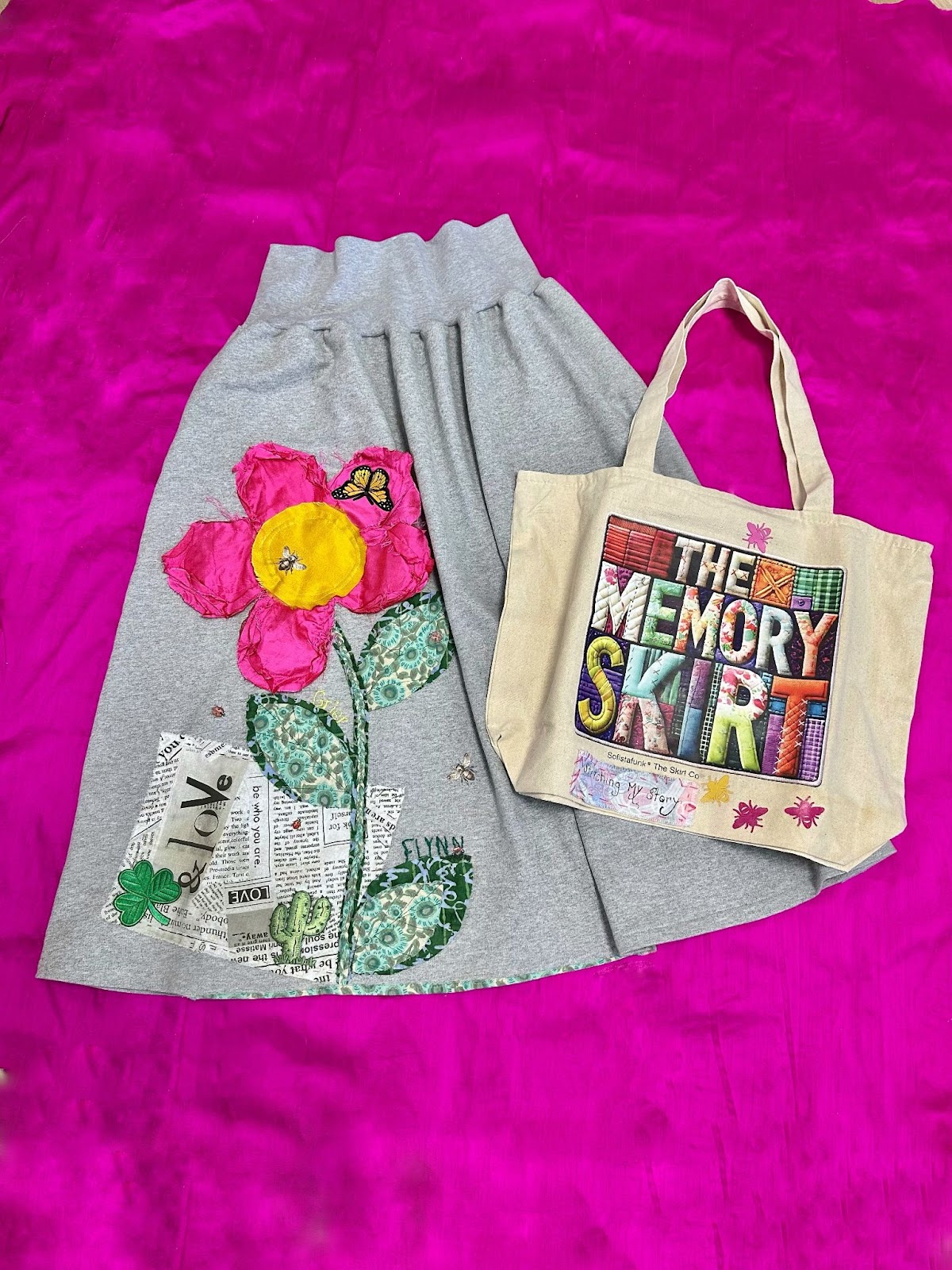This Designer is Helping Families Preserve Their Stories Through Fashion – BlackDoctor.org


For designer Arlinda McIntosh, fashion has never been just about what you wear — it’s about what you remember.
The New Jersey–based creator behind Sofistafunk: The Skirt Company has spent decades turning fabric into storytelling. But her latest project — a custom “Memory Skirt” for former news reporter Rita Flynn — brings her work to a deeply personal level, blending creativity, family history, and awareness of cognitive health.
A Legacy Sewn from Home
Arlinda’s love of design began early.
“My mom was a dressmaker,” she recalls. “As a kid, I didn’t think much of it — but as an adult, I realize creativity was always around me.”
That foundation shaped her lifelong passion. After launching Sofistafunk in 1999, she became known for her signature sustainable skirts made from upcycled fabrics. But as memory and thinking issues began to affect her family — her mother, grandmother, and later her brother — Arlinda found new meaning in her craft.
“I didn’t want to just make clothes,” she says. “I wanted to make something that could matter — something we could add to as life goes on.”
The Spark: A Skirt That Carries a Life
That idea became the Memory Skirt — a garment that holds the story of a person’s life. For Rita’s skirt, Arlinda studied her background and favorite things, then hand-stitched them into the design.
“She loved embroidery, so I embroidered her children’s names,” Arlinda explains. “I made a gold ‘forget-me-not,’ her favorite color, and added butterflies and shamrocks to honor her Irish and Texan roots.”
Each stitch carried meaning — transforming fabric into memory. “You might forget a name,” she says, “but you’ll remember the butterfly, the texture, the feeling. Familiar things can spark something inside you.”

Turning Fashion into Therapy
For Arlinda, the Memory Skirt is part of something larger — what she calls “Skirt Therapy.”
Through workshops and small-group sessions, she helps families turn sentimental fabrics, buttons, and patches into wearable keepsakes.
“It’s not just about the past,” she says. “It’s about honoring our memories in the present and future.”
These sessions often spark conversations about brain health — a topic Arlinda believes should be normalized.
“We check our teeth, we check our hearts,” she says. “Why not check our brains? These talks shouldn’t be taboo.”
She brings humor and honesty into those conversations, especially with her great-grandchildren.
“If Nana forgets her shirt, that means it’s time to go to the doctor,” she says. “You have to make it okay to talk about these things.”
Arlinda has partnered with Eli Lilly’s public awareness campaign, “More Than Normal Aging,” to help people differentiate between typical memory changes associated with age and the initial indicators of Alzheimer’s disease.
“With my brand, you’re getting more than a garment,” she says. “If I have information, I share it — because everything matters.”
Sustainability with Soul
Arlinda’s designs have always reflected sustainability — but also sentiment. Many of her creations begin with recycled denim, a choice inspired by loss.
“My brother had this old pair of Wranglers I used to tease him about,” she says. “After he passed, I couldn’t let them go. I cut them up and made skirts for my children. That’s when I realized every scrap can hold a story.”
Today, every Sofistafunk skirt embodies that philosophy: fashion as therapy, and sustainability as legacy.
“What we wear reflects how we feel,” she says. “Our clothes can become memory keepers.”
What’s Next: Expanding the Conversation
Arlinda hopes to expand Skirt Therapy to art museums, schools, senior centers, and virtual workshops — helping more people turn old garments into emotional heirlooms.
“Maybe your favorite shirt doesn’t fit anymore,” she says. “Don’t throw it out. Cut out a heart-shaped patch, sew it onto something new, and carry that memory forward. A stain isn’t a flaw — it’s a new direction.”
She also leads creative programs like “Camp Sofistafunk” and “Older & Bolder,” encouraging women over 50 to embrace health, confidence, and self-expression.
“The older we get, the bolder we should be — in what we wear, how we live, and how we care for ourselves,” she says.

Fashion That Feels Like Home
Creating Rita’s Memory Skirt was more than a commission — it was a calling.
“When I held up that finished skirt, I felt like a leaf in spring — fresh, alive, full of purpose,” Arlinda says. “Something small can make a big impact.”
Through every stitch, Arlinda McIntosh reminds us that fashion can do more than decorate — it can heal, connect, and remember.
“Fashion doesn’t have to be shallow,” she concludes. “It can remind us who we are.”
When to see a doctor
Memory and thinking issues that come with age may be slight at first and can be easily dismissed. But for some, these changes become more common and can progress over time.
If you or someone you love is starting to notice these signs, now is the time to act. Speak with a doctor about what you’re experiencing.
Memory and thinking changes that come with age often start subtly and are easy to overlook. However, for some people, these shifts become more frequent and gradually worsen. Common signs include:
- Difficulty finding the right words when talking with family or friends
- Occasional errors when managing money or paying household bills
- Forgetting appointments or upcoming events
- Losing track of time or place
- Misplacing important items, such as keys or a wallet
If these symptoms sound familiar, the most important step you can take is to discuss them with a healthcare professional—sooner rather than later.
For more information and support around memory and thinking concerns, visit MoreThanNormalAging.com.




